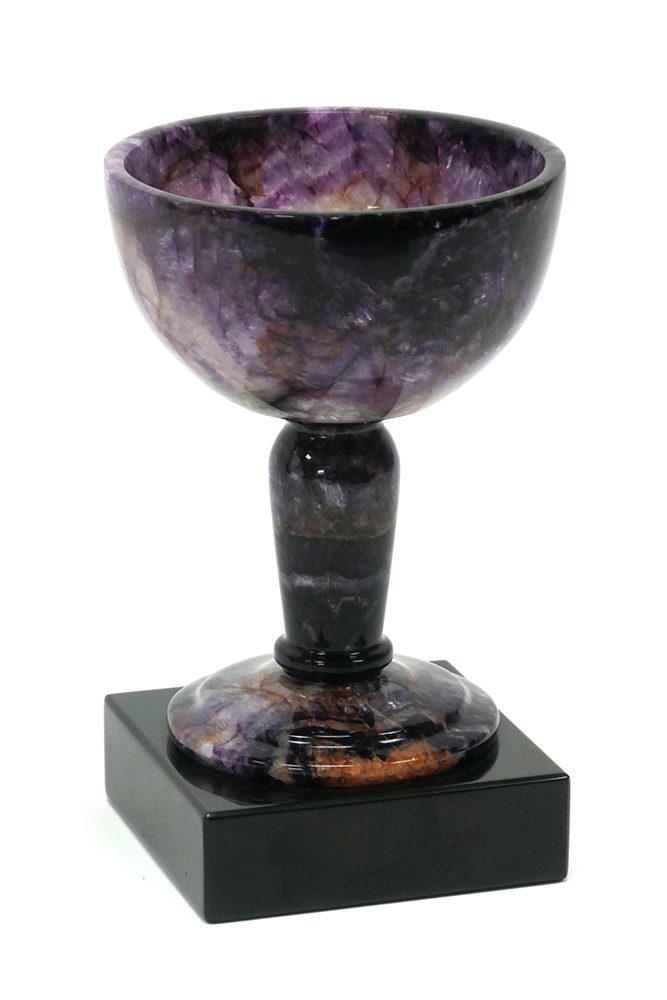Blue John
In the late 18th century Blue John was very popular and much in demand by the aristocracy...
18/04/2024 Blog
One of the highlights for our June Fine Art auction has to be a Blue John goblet carved by local craftsman Edward Leonard Fisher. It’s a lovely example and is mounted on Ashford black marble base.
So this week I thought I would tell you about Blue John or as it is sometimes referred to “Derbyshire Spar”. It is just found in two caverns Blue John Cavern and Treak Cliff Cavern both in Castleton in Derbyshire. It is a type of banded fluorite and forms in the veins and cavities of limestone. Its name is thought to have derived from the French blue- Jaune meaning blue-yellow. Another theory is that the name “Blue John” was termed by 18th century miners to separate the blue/purple stone from zinc sulphites known as “Black Jack”. The beautiful colours are deep purple, royal blue, yellow and creamy white.

The caverns deposits are thought to be about 250 million years old and are still mined in small amounts today. There are eight working seams at Blue John Cavern which are known Twelve Vein, Old Dining Room, New Dining Room, Five Vein, Organ Room, New Cavern and Landscape. The miners who work the remaining seams are also tour guides for underground public tours. Something I must do this summer!
Trek Cliff Caverns have been mined since around 1750 and was originally known as Miller’s Mine and was believed to be the first Blue John mine. In 1935 these caves were opened to the public for the first time. Around half a ton of Blue John is mined every year from Treak Cliff Cavern.
In the late 18th century Blue John was very popular and much in demand by the aristocracy for ornamental vases, cups, columns and the like. Many examples can be seen at Chatsworth House and even Buckingham Palace.
Georgiana Cavendish, Duchess of Devonshire (1757-1806) was a great fan of Blue John. The “Chatsworth Tazza” is thought to be one of the largest blue John pieces ever made and was commissioned from William Adam from Matlock in 1842. The bowl is 51cm in diameter and is on display in the dining room. Another striking display of Blue John at Chatsworth is an 81-piece window which is in the private quarters.
There are many collectors from all over the world for Blue John pieces. Usually, the deeper coloured examples fetch the highest prices. Prices start from under a hundred pounds for a small piece of jewellery such as a ring or a pendant, a few hundred for a bowl to several thousand pounds for large pedestal vases and columns. Our lovely goblet is expected to make in the region of £1000-1500 in our June 14th sale.